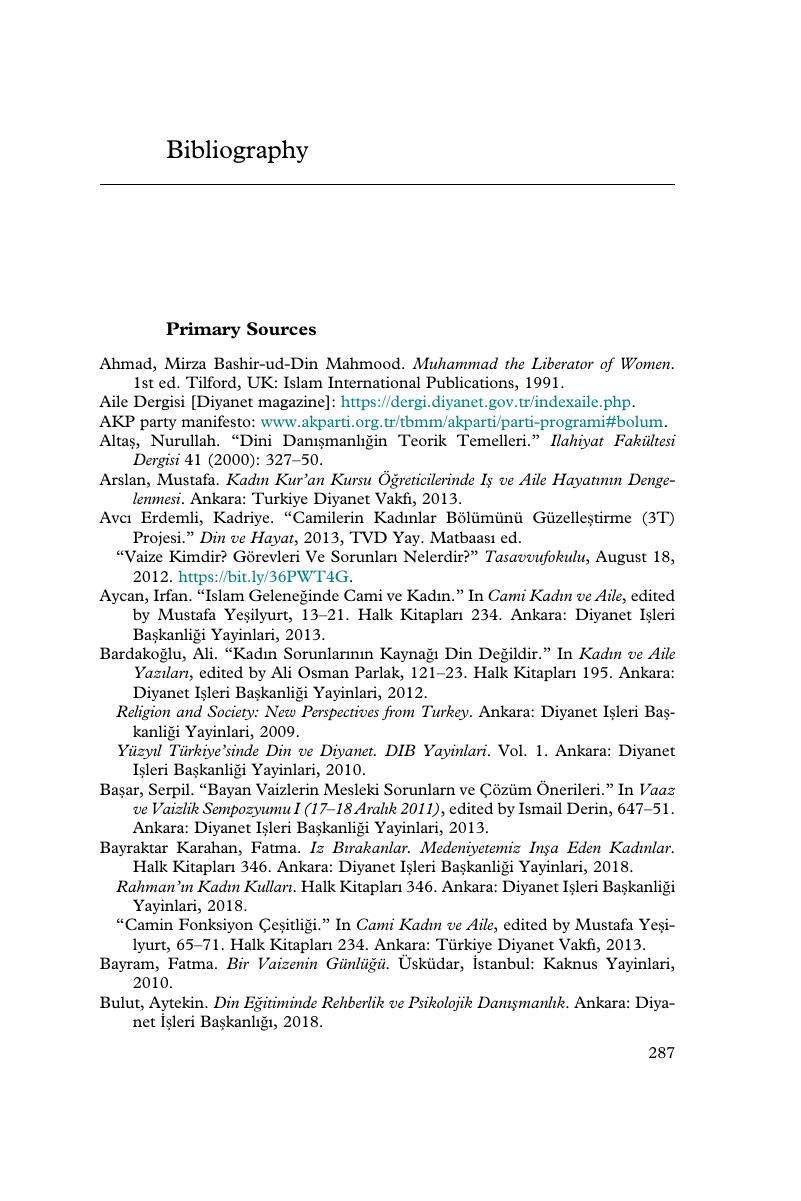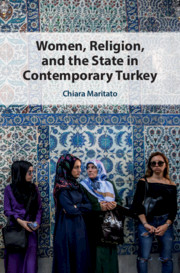Book contents
- Women, Religion, and the State in Contemporary Turkey
- Women, Religion, and the State in Contemporary Turkey
- Copyright page
- Contents
- Figures
- Tables
- Preface and Acknowledgments
- Abbreviations
- 1 Introduction
- Part I Transitivities
- Part II Women in the Diyanet
- Part III Reassessing Women, Religion, and the State
- Bibliography
- Index
- References
Bibliography
Published online by Cambridge University Press: 22 May 2020
- Women, Religion, and the State in Contemporary Turkey
- Women, Religion, and the State in Contemporary Turkey
- Copyright page
- Contents
- Figures
- Tables
- Preface and Acknowledgments
- Abbreviations
- 1 Introduction
- Part I Transitivities
- Part II Women in the Diyanet
- Part III Reassessing Women, Religion, and the State
- Bibliography
- Index
- References
Summary

- Type
- Chapter
- Information
- Women, Religion, and the State in Contemporary Turkey , pp. 287 - 309Publisher: Cambridge University PressPrint publication year: 2020



